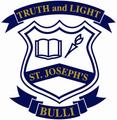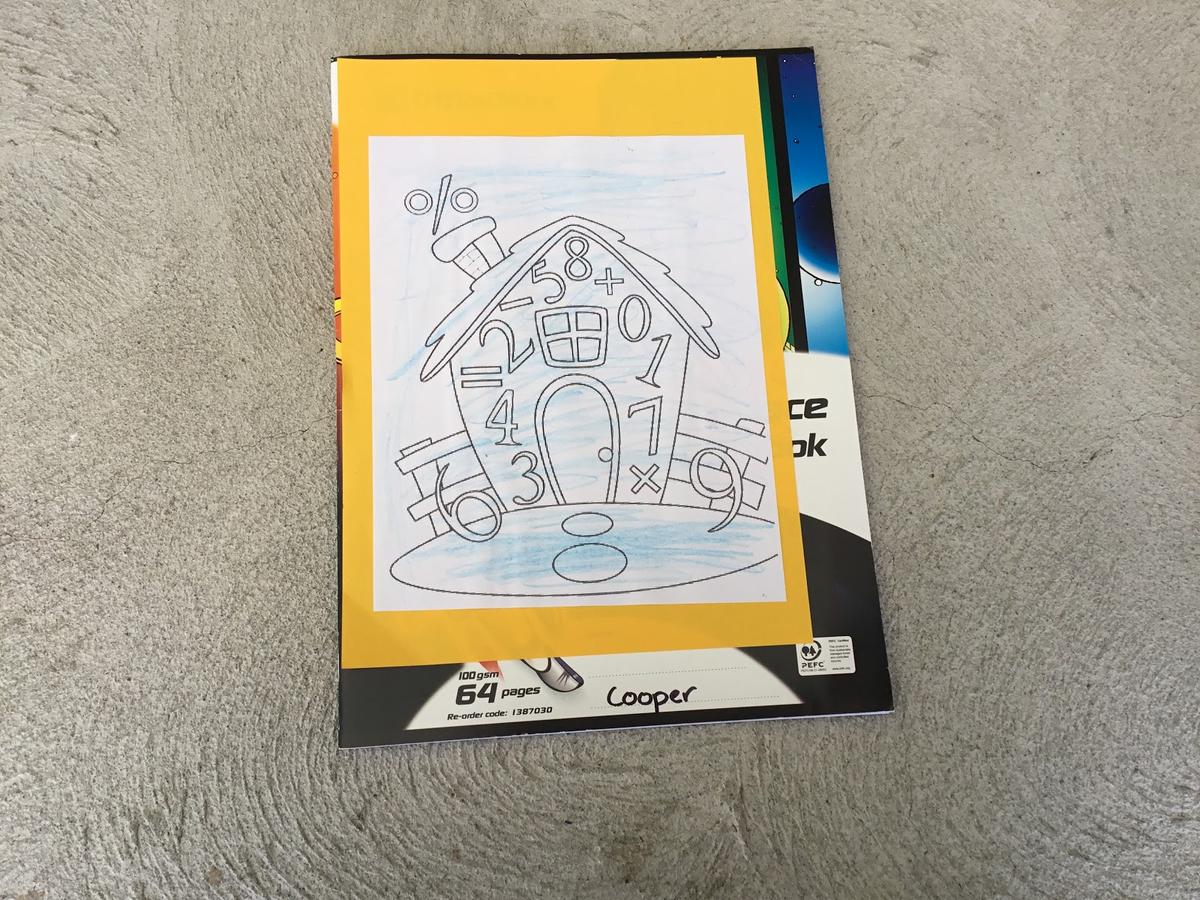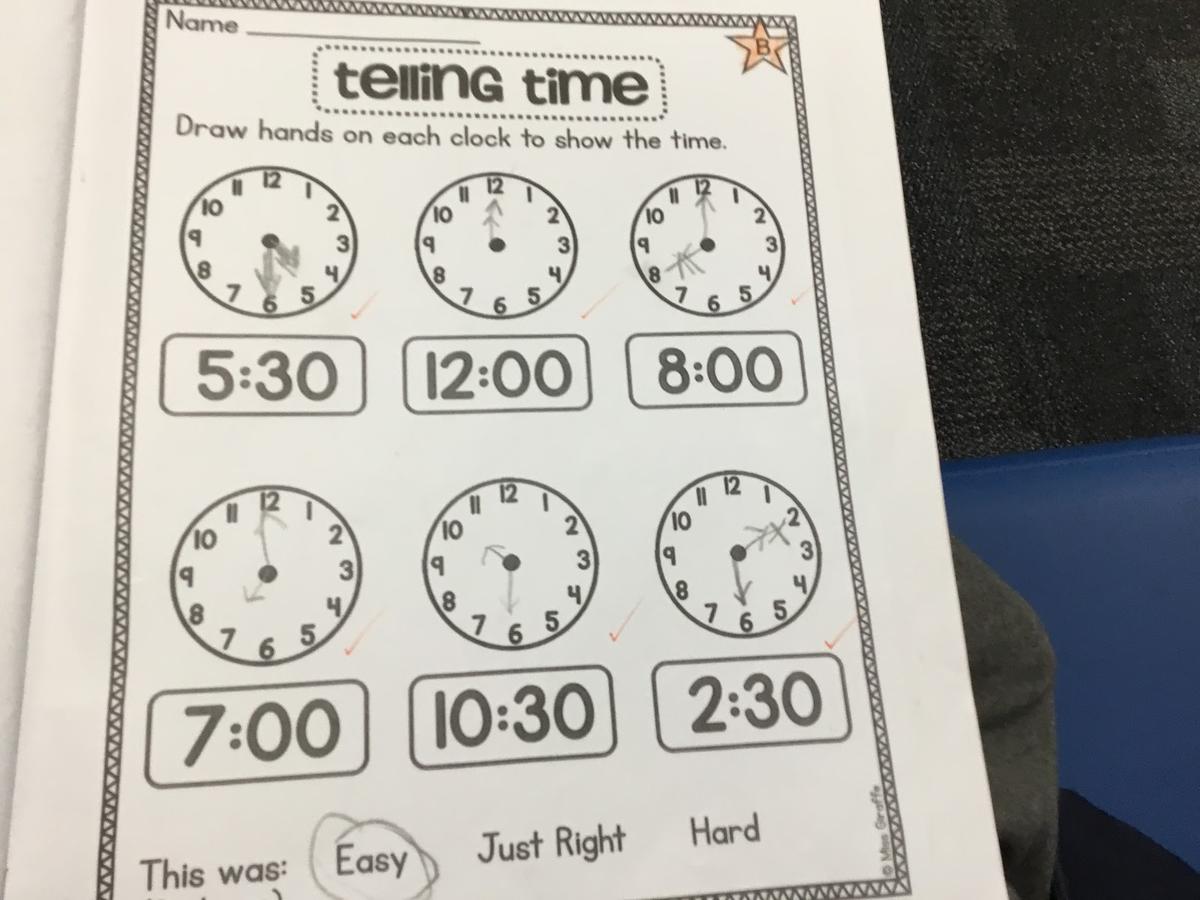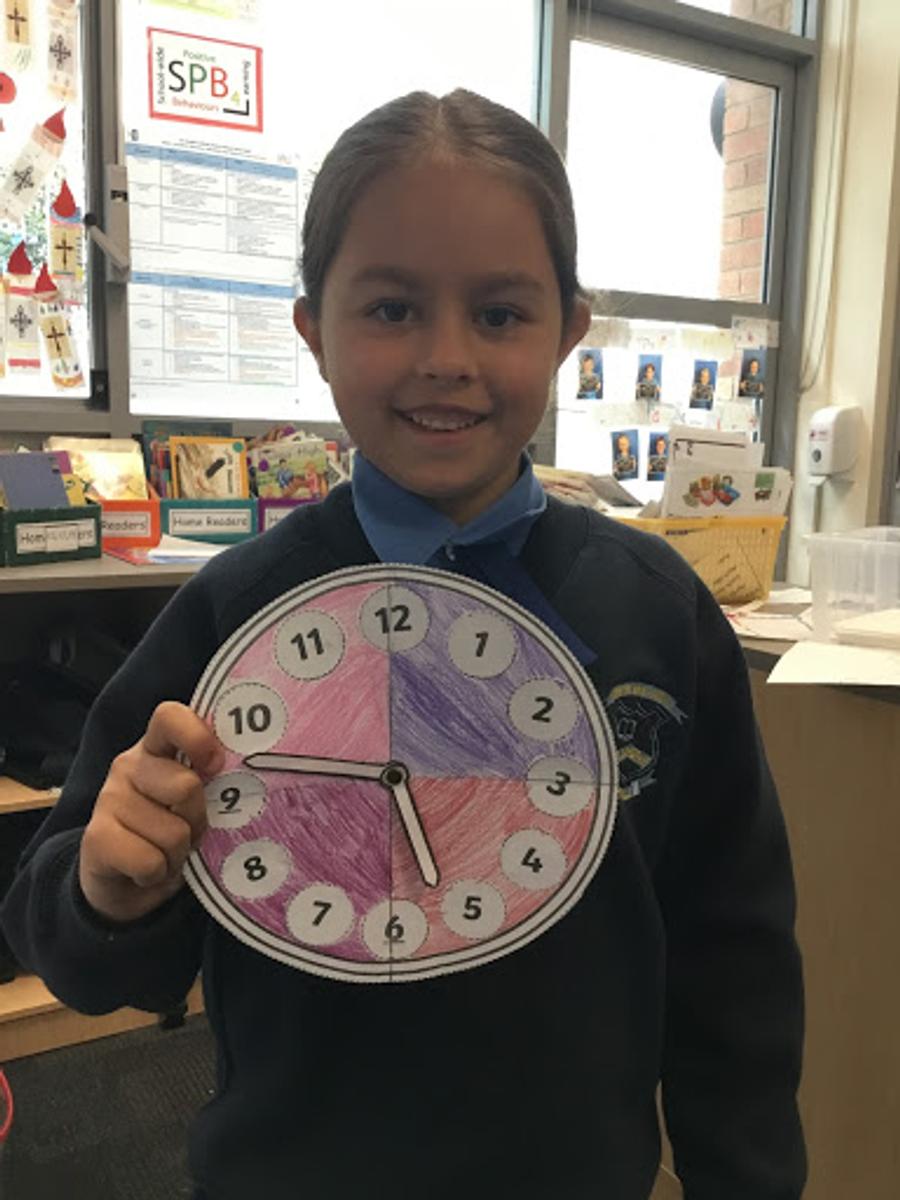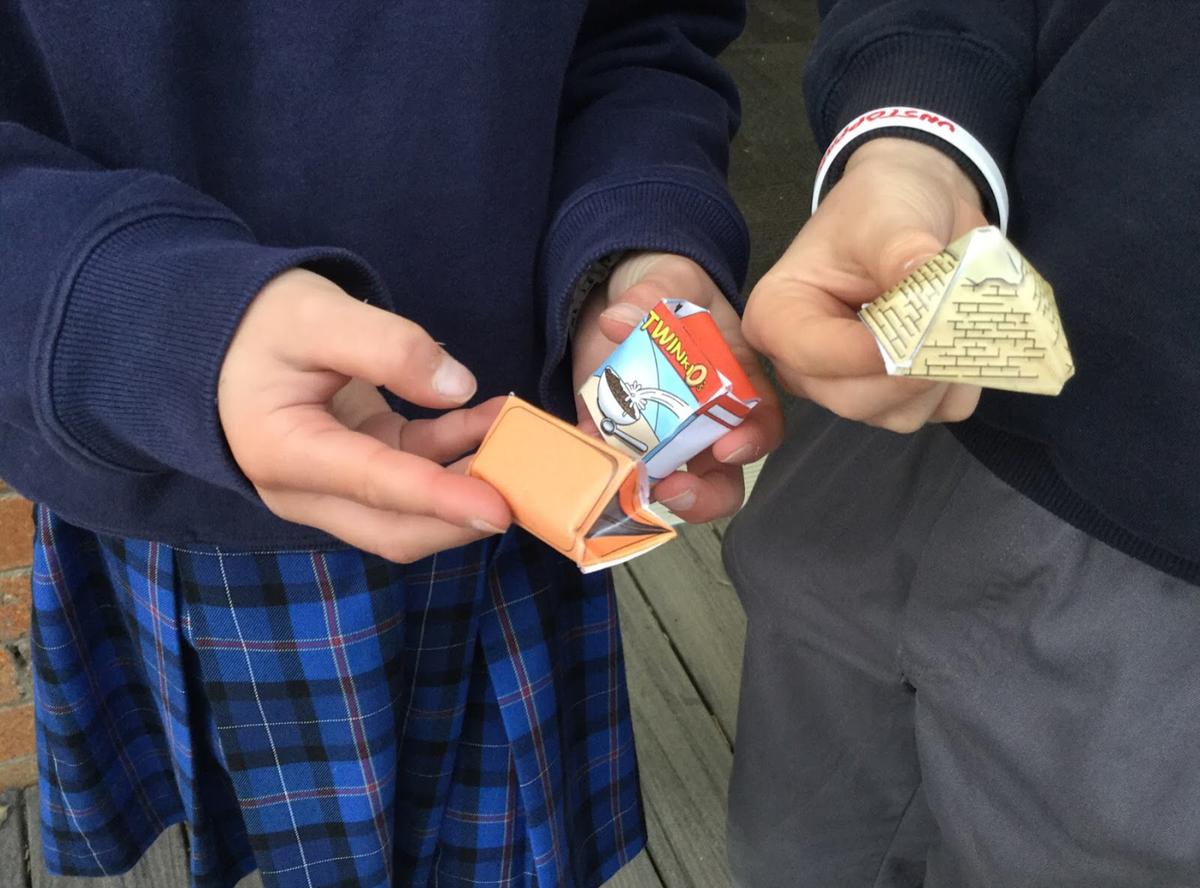Yr 6 Newsletter Committee

Kindergarten
KJ
Last week Kindergarten were learning about halves and patterns in mathematics. Halves are important because they’ll know if they’re giving away equivalent amounts of stuff to others and patterns are important to learn so that they can recognise patterns in the world around us. A highlight from the learning about the fraction half for Cooper was that he can divide things into two equal amounts and he learned that when doing patterns he could repeat something over and over again. A highlight for Wes when learning about patterns was that he could see multiples of the same thing and when working with halves, Wes knew he could also divide something into equivalent parts. A HoM (Habit of Mind) that Cooper used in maths was persisting so that he can get the correct answers. A HoM that Wes uses in maths is metacognition so that he can estimate the correct answers.
By Jamie Z
KM
Last week KM started to learn about finding lines of symmetry and shading wholes and halves of shapes. KM used the smart board to watch Ms McCammon model a ‘think aloud’ and then tried different strategies in their maths book to work it out themselves. Lani and Blake were asked what Habit of Mind they thought they have used the most. Blake and Lani couldn’t remember every Habit of Mind, so I showed them the list and we sang the song to revise all of the HoM. Lani said she used persisting because she had to keep on trying to understand what to shade when looking at halves and wholes. Blake said he used managing impulsivity by taking his time so he could see what shapes have lines of symmetry. Blake, Lani and KM have enjoyed learning new things in maths!
By Ella V
Year 1
1J
In maths, 1J have been focusing on place value units and tens. 1J are learning what column the units and tens go into.They have been playing the game “Who has, I have” to reinforce addition and subtraction with tens and ones. Last week 1J were striving for accuracy while learning about time. They were learning about am and pm, hours and minutes. Sophie, in 1J told us that we need to understand time so that we know what time to meet someone or go to school.
Nash’s work in 1J .
By Josh B
1M
Tick, tock, tick, tock, 1M watched as the clock hands turned…. Last week in maths 1M were learning about time, by having fun making beautiful analog clocks and exploring the world of digital clocks. 1M have also been completing time worksheets and Amelie loved cutting and gluing the worksheets to match the o’clock times with digital times. Elena said she enjoyed practicing her o’clock times the most. The girls both said they had to use their habits of mind; persisting and striving for accuracy. Along with learning about time, 1M have been enjoying learning about 3D shapes!
By Jessica H
Year 2
2J
In 2J, Javier and Aaron have been learning about time. They have been learning how to read time and write time in analog and digital. 2J have also been learning to tell the time and other ways to say the time. Eg. quarter past 2 or 2:15. Javier and Aaron have had fun learning about time in maths and learning from their teacher.
By Fionn C
2M
‘If I calculated correctly, and used my past knowledge from what we have been doing in class about time; the bell should go in 3...2...1! BRRRING!’ Knowing the time is a very important skill to have in life, and it’s best to know it early on - that’s why Year 2M are learning about the time in maths at the moment. They have made their own paper plate clocks with a split pin in the middle so they can move the hands of the clock around! 2M have shaded every quarter of the clock a different colour to make it easier for them to understand. These clocks have helped them know what time is, because time is fairly new to them. Rachel used persisting a lot because she found telling the time a little bit difficult to understand at first. Now she is a pro at it though! Milla uses striving for accuracy frequently to check her answers with other people so she knows if her answers were right.
By Issy W
Year 3
3J
3J have been focusing on Three-Dimensional objects, and also fractions in Mathematics. Sophia enjoyed making mini 3D objects in class and labeling the properties such as the vertices and edges of different 3D objects. Year 3 have also been doing different games to learn about fractions. Year 3 now know how to change improper fractions to proper fractions. Sam really enjoyed learning about fractions and playing games to match different fractions that are represented differently. In maths Sophia and Sam have been using the HoM persisting and thinking flexibly when they come across new tasks that they haven’t seen before. 3J have done two assessments in class recently, which were focused on fractions and 3D objects.
By Eleni C
3M
In 3M, they have been focusing on three dimensional objects. They have been looking at nets of 3D onjects. To get the net of a 3D onject, imagine printing the object, cutting it out and laying it flat. 3D objects have faces (sides), edges and vertices (corners). For example, a cube has six faces, twelve edges and eight vertices. 3M also did a task where they made their own 3D objects out of paper.
Thank you Daniel and Miller who have let us know about the mathematics learning in Year 3. Three dimensional objects are everywhere!
By Nicholas TP
Year 4
4M
“WOW” so many amazing brains working hard in 4M this week during mathematics. In maths 4M have been working on time, shapes and decimals. Working with time they have been learning how to draw clocks and tell the time. Learning and responding to questions about time will help 4M in future jobs and careers. While learning about shapes 4M have been focusing on rotating, reflecting, translating and tessellating shapes. Emmie explained that when you rotate you turn the shape into a different position, when you reflect you flip the shape, when you translate you slide the shape and when you tessellate you make a new shape with an already existing shape with no gaps between them. Another thing 4M have been learning in maths is decimals. Emmie said that with decimals the first number is called a whole number, the number after the decimal point is called the tenths place value, and after the tenths place value is the hundredths. After all this maths work surely Emmie used one of the 16 Habits of Mind! Emmie replied saying that she persisted in trying new things to help her move forward in her learning. She then also told me that a highlight of her maths findings and discoveries was working with the shapes because she got to make and construct new shapes that she had never even seen or noticed before.
By Stephanie S
4J
In mathematics 4J, along with Charlotte and Sophie have enjoyed having maths brain breaks on the digital game, Super Maths Bowling where they can convert fractions by using multiplication and division. 4J have also been learning how to read timetables successfully as well as comparing and contrasting between many different types of tables. Charlotte has had use her problem solving skills to read timetables and find out where and what time the train was arriving. Sophie has had to use her problem solving skills to work out challenging maths equations in her maths book. Overall Charlotte and Sophie have enjoyed putting their maths skills into practice.
By Cara M
Year 5
5J
‘There’s a fine line between a numerator and a denominator, only a fraction would understand’ - states Mrs Smith’s shirt. During maths 5J’s main focus has been learning to add and subtract whole numbers and fractions, using diagrams to explain. As well as this they have been exploring transformations like rotate, transfer and reflect and the skill of enlargement (making things bigger). 5J have been using the website maths online as a learning tool. I am sure they had fun during Literacy and Numeracy week 2019!
By India C
5M
“7x7?” “um forty-nine”
“625 minus 324?” “oh that’s easy, 301”
“What’s the difference between a rotation and a reflection?”
5M have been doing some tough learning in Maths. They have really been in the learning pit and have enjoyed looking at proper and improper fractions. “It’s been great working on revision tasks as we get to revise our prior learning” -Jacob H
5M have been turning their brains inside out looking at rotations and reflections on Pic Collage. They are turning all sorts of objects from planes, to shoes, even chips!
5M are excited to continue the rest of the week focusing on maths and were especially excited about the learning pit challenge tasks they did in Literacy and Numeracy week!
By Aleya C
Year 6
Recently, in math, Year Six have been learning about the most efficient multiplication strategies and BEDMAS/BODMAS/BIDMAS - Order of Operations. The newest written strategy and by far the most favoured by many in Y6 for multiplication problems is the Lattice Method. It is an easily read and drawn diagram using only a square box, some horizontal, vertical and diagonal lines and the numbers of which your problem involves. On Tuesday during Literacy and Numeracy week, Y6 dived into challenging math problems. Many of these were real-life word problems that had us in the learning pit! Safe to say the students and teachers went through a mix of emotions! It was challenging, engaging and had everyone working interdependently on a variety of problems ranging from trying to cross bridges in minimal time, working out how many peas were in a jar through given mathematical number clues or applying mathematical processes to work out the cost of food items. See if you can solve the one below. The currency is English Pounds. It was great learning new math skills and training our brains with worded problems!
By Sophie B
